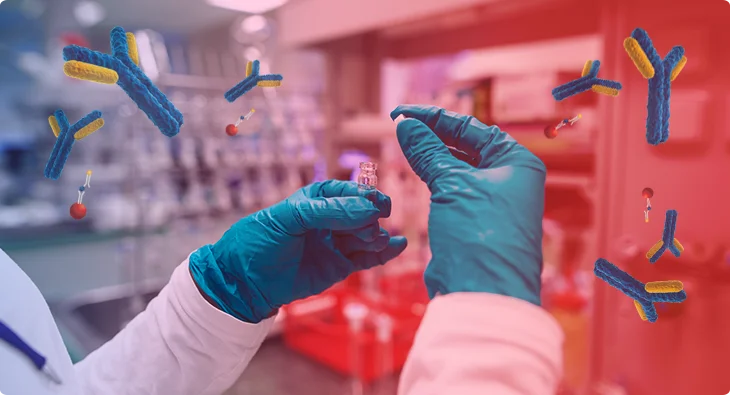Multiplexing Technology Accelerates Vaccine Development
Bead-based xMAP® Technology can be used to measure immune response and perform other important genomic and proteomic queries
Since the very first vaccine was demonstrated by Edward Jenner in 1796 against the scourge of smallpox, vaccination has been one of the most significant drivers of improving human health. From polio to mumps to COVID-19, vaccines protect millions who otherwise might suffer terrible symptoms or death.
Luminex’s xMAP® Technology used for mRNA vaccine development
Here at Luminex, we are proud to contribute to that amazing legacy with our bead-based xMAP® Technology. For more than 25 years, this multiplexing tool has supported the research and clinical studies needed for the development and commercialization of new vaccines—and we’re not slowing down. Indeed, xMAP-based assays were used to test antibody binding levels during the development of the world’s first mRNA vaccine for SARS-CoV-2 from Pfizer and BioNTech.
The versatility of xMAP-based assays in vaccine development
Luminex xMAP assays are useful for vaccine development in part because of their tremendous versatility: they can be designed easily to test for genomic or proteomic targets, querying as many as 500 analytes simultaneously per sample. Furthermore, they are routinely used to measure key elements in the immune response—such as cytokine signaling, humoral immunity or antibody production, and T-cell activation—in addition to a host of other important biological factors. Collectively, these capabilities make bead-based xMAP Technology the go-to platform for vaccine development and clinical evaluation.
The Luminex team is committed to supporting innovative research and advancement of effective vaccine development for infectious diseases and other health conditions. Our multiplexing technology was designed to allow scientists anywhere to build and use their own assays, but we also offer in-house custom development services to anyone looking for expert help.
Resources for learning more about xMAP assays in vaccine development
Tutorial: Multiplexing for Vaccine Development
If your work involves vaccine development, don’t miss this new tutorial in Genetic Engineering & Biotechnology News from Eric Shaw, head of clinical assay development at Takeda Vaccines. It’s an excellent insider’s view, replete with useful tips about how multiplexing makes it possible to conserve samples and discern immune subtleties.
METHODS Special Issue: New Multiplex Assay for Vaccine Immunogenicity Testing
Scientists at the Serum Institute of India have developed a new multiplex immunoassay to perform the mouse immunogenicity testing recommended in many countries for quality control in the production of combination vaccines. They chose xMAP Technology to design the serological assay, which features higher throughput, faster analysis, and lower sample volume compared to serial ELISA testing.
METHODS Special Issue: New Assays to Characterize Vaccination and Infection History
Scientists in the Waterboer lab at the German Cancer Research Center have developed the building blocks for a multiplex assay that will make it possible to quickly interrogate a person’s history of infection and vaccination. In a paper from Methods, the team reports developing individual assays for antibodies to several pathogens, noting that these assays could easily be combined into a multiplex assay in the future.
Webinar: Designing a COVID-19 Vaccine Efficacy Assay with the xMAP INTELLIFLEX® System
In a recent webinar, Dr. Jeffrey Borgia from Rush University Medical Center in Chicago spoke about his team’s experience developing a high-throughput serology assay for monitoring the immune response to COVID-19 vaccines using the xMAP INTELLIFLEX® System.
How Multiplexing Can Support Vaccine Development
A noteworthy example of how scientists have used xMAP Technology in vaccine development arises from the development of human papillomavirus (HPV) vaccines. More than a dozen HPV genotypes are associated with cervical cancer, necessitating a highly robust multiplex assay for the vaccine development process.

